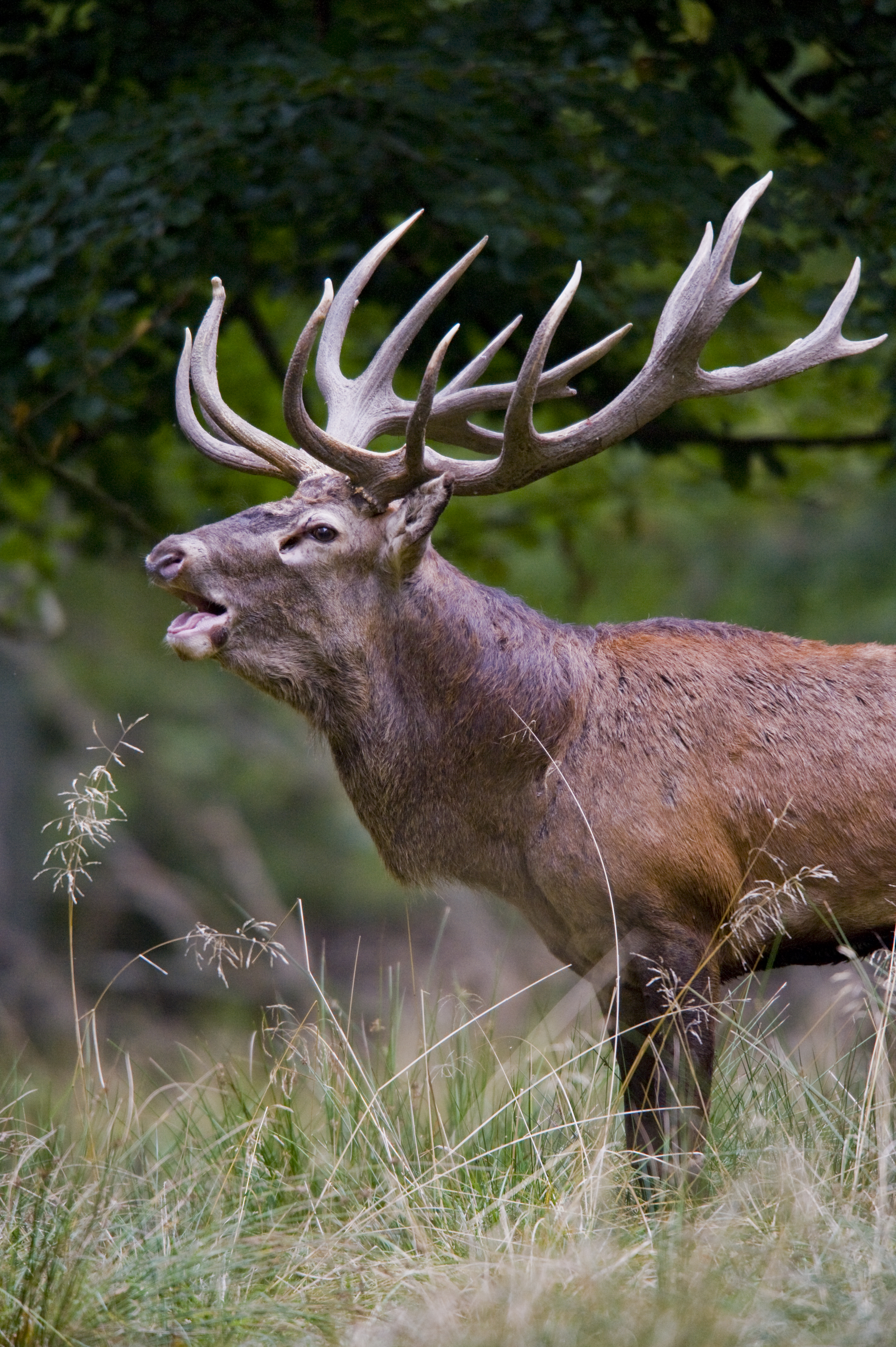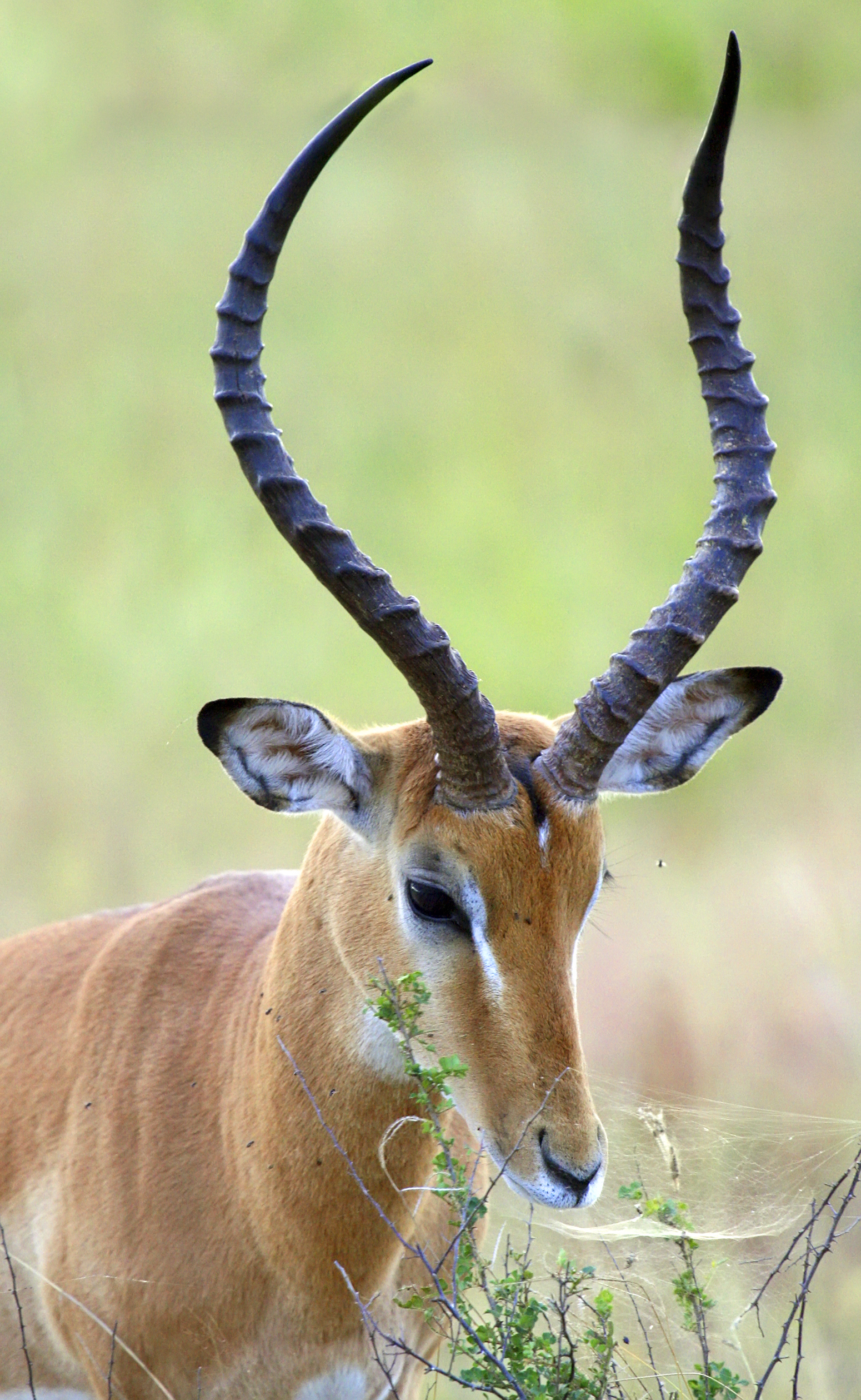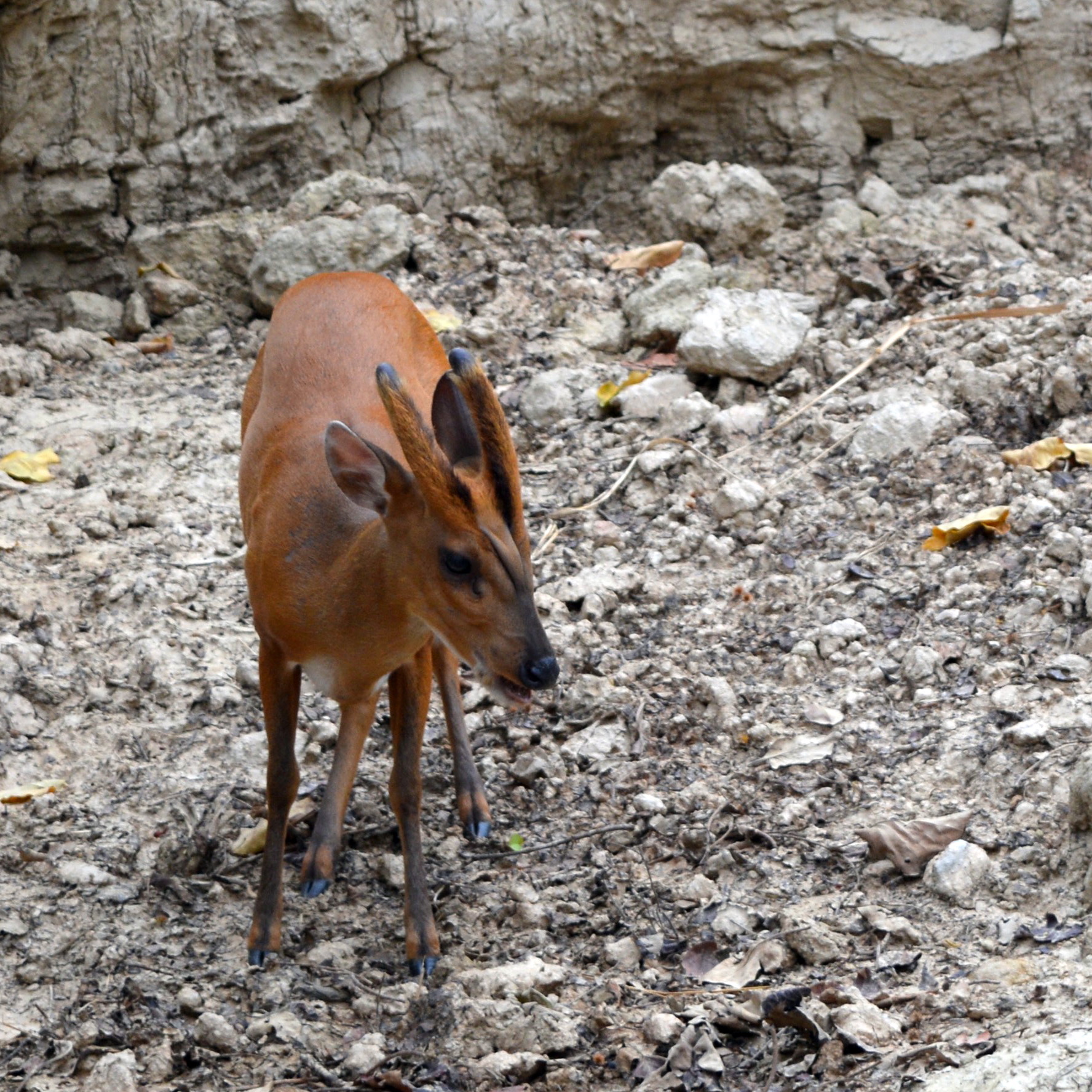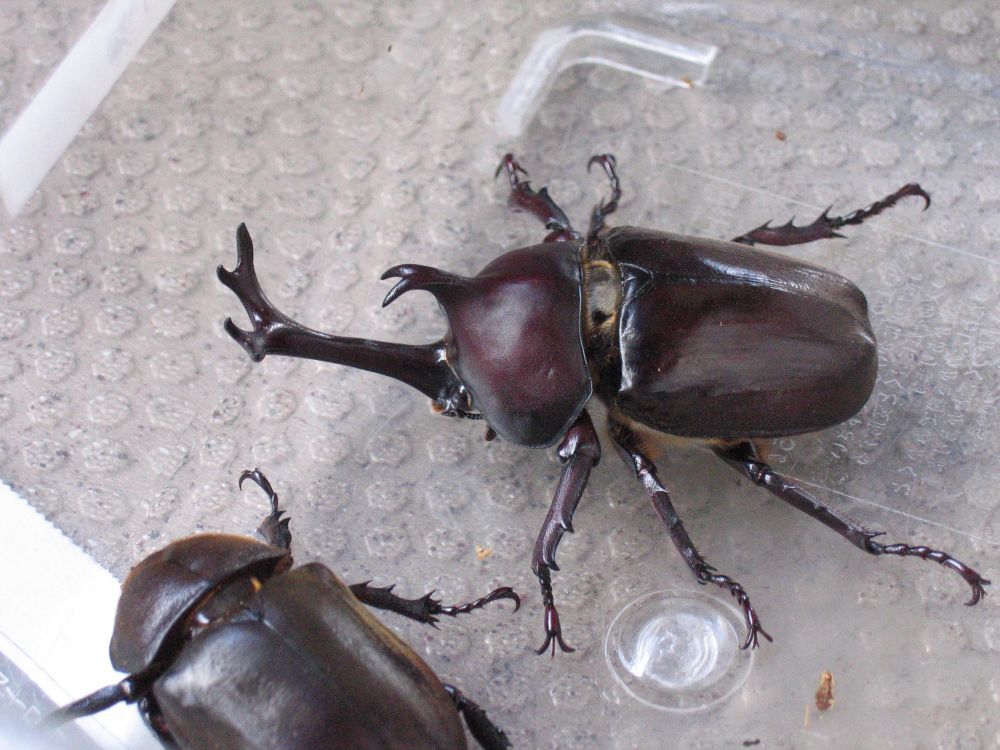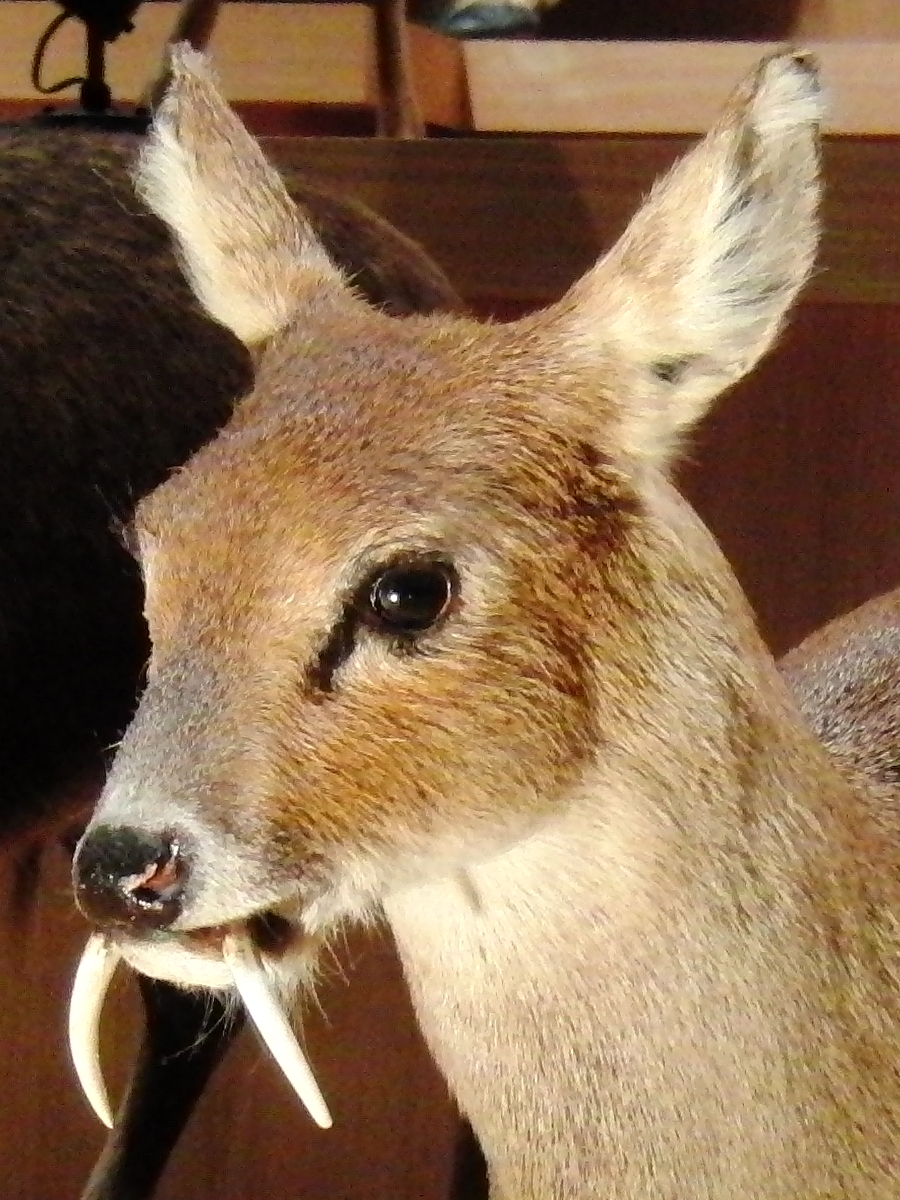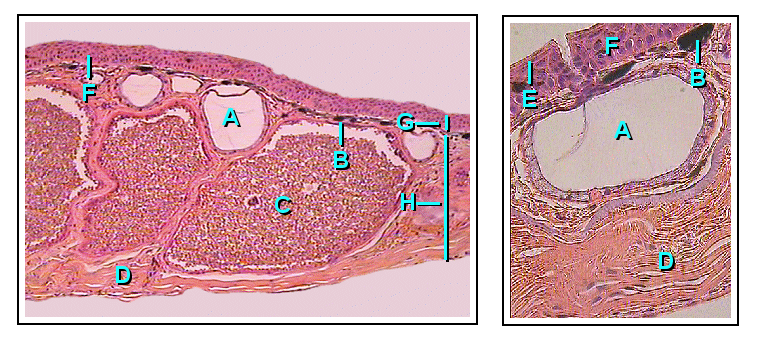|
Antler
Antlers are extensions of an animal's skull found in members of the Cervidae (deer) Family (biology), family. Antlers are a single structure composed of bone, cartilage, fibrous tissue, skin, nerves, and blood vessels. They are generally found only on males, with the exception of Reindeer, reindeer/caribou. Antlers are Moulting, shed and regrown each year and function primarily as objects of sexual attraction and as Weapon (biology), weapons. Etymology Antler comes from the Old French ''antoillier ''(see present French : "Andouiller", from'' ant-, ''meaning before,'' oeil, ''meaning eye and'' -ier'', a suffix indicating an action or state of being) possibly from some form of an unattested Latin word ''*anteocularis'', "before the eye" (and applied to the word for "branch" or "horn (anatomy), horn"). Structure and development Antlers are unique to cervids. The ancestors of deer had tusks (long upper canine tooth, canine teeth). In most species, antlers appear to replace t ... [...More Info...] [...Related Items...] OR: [Wikipedia] [Google] [Baidu] [Amazon] |
Reindeer
The reindeer or caribou (''Rangifer tarandus'') is a species of deer with circumpolar distribution, native to Arctic, subarctic, tundra, taiga, boreal, and mountainous regions of Northern Europe, Siberia, and North America. It is the only representative of the genus ''Rangifer''. More recent studies suggest the splitting of reindeer and caribou into six distinct species over their range. Reindeer occur in both Animal migration, migratory and wiktionary:sedentary#Adjective, sedentary populations, and their herd sizes vary greatly in different regions. The tundra subspecies are adapted for extreme cold, and some are adapted for long-distance migration. Reindeer vary greatly in size and color from the smallest, the Svalbard reindeer (''R.'' (''t.'') ''platyrhynchus''), to the largest, Osborn's caribou (''R. t. osborni''). Although reindeer are quite numerous, some species and subspecies are in decline and considered Vulnerable species, vulnerable. They are unique among deer (Ce ... [...More Info...] [...Related Items...] OR: [Wikipedia] [Google] [Baidu] [Amazon] |
Cervidae
A deer (: deer) or true deer is a hoofed ruminant ungulate of the family Cervidae (informally the deer family). Cervidae is divided into subfamilies Cervinae (which includes, among others, muntjac, elk (wapiti), red deer, and fallow deer) and Capreolinae (which includes, among others reindeer (caribou), white-tailed deer, roe deer, and moose). Male deer of almost all species (except the water deer), as well as female reindeer, grow and shed new antlers each year. These antlers are bony extensions of the skull and are often used for combat between males. The musk deer ( Moschidae) of Asia and chevrotains ( Tragulidae) of tropical African and Asian forests are separate families that are also in the ruminant clade Ruminantia; they are not especially closely related to Cervidae. Deer appear in art from Paleolithic cave paintings onwards, and they have played a role in mythology, religion, and literature throughout history, as well as in heraldry, such as red deer that appear ... [...More Info...] [...Related Items...] OR: [Wikipedia] [Google] [Baidu] [Amazon] |
Horn (anatomy)
A horn is a permanent pointed projection on the head of various animals that consists of a covering of keratin and other proteins surrounding a core of live bone. Horns are distinct from antlers, which are not permanent. In mammals, true horns are found mainly among the ruminant artiodactyls, in the families Antilocapridae ( pronghorn) and Bovidae ( cattle, goats, antelope etc.). Cattle horns arise from subcutaneous connective tissue (under the scalp) and later fuse to the underlying frontal bone. One pair of horns is usual; however, two or more pairs occur in a few wild species and in some domesticated breeds of sheep. Polycerate (multi-horned) sheep breeds include the Hebridean, Icelandic, Jacob, Manx Loaghtan, and the Navajo-Churro. Horns usually have a curved or spiral shape, often with ridges or fluting. In many species, only males have horns. Horns start to grow soon after birth and continue to grow throughout the life of the animal (except in pronghorns, whi ... [...More Info...] [...Related Items...] OR: [Wikipedia] [Google] [Baidu] [Amazon] |
Bone
A bone is a rigid organ that constitutes part of the skeleton in most vertebrate animals. Bones protect the various other organs of the body, produce red and white blood cells, store minerals, provide structure and support for the body, and enable mobility. Bones come in a variety of shapes and sizes and have complex internal and external structures. They are lightweight yet strong and hard and serve multiple functions. Bone tissue (osseous tissue), which is also called bone in the uncountable sense of that word, is hard tissue, a type of specialised connective tissue. It has a honeycomb-like matrix internally, which helps to give the bone rigidity. Bone tissue is made up of different types of bone cells. Osteoblasts and osteocytes are involved in the formation and mineralisation of bone; osteoclasts are involved in the resorption of bone tissue. Modified (flattened) osteoblasts become the lining cells that form a protective layer on the bone surface. The mine ... [...More Info...] [...Related Items...] OR: [Wikipedia] [Google] [Baidu] [Amazon] |
Muntjac
Muntjacs ( ), also known as the barking deer or rib-faced deer, (URL is Google Books) are small deer of the genus ''Muntiacus'' native to South Asia and Southeast Asia. Muntjacs are thought to have begun appearing 15–35 million years ago, with remains found in Miocene deposits in France, Germany and Poland. Most are listed as least-concern species or Data Deficient by the International Union for Conservation of Nature (IUCN), although others such as the black muntjac, Bornean yellow muntjac, and giant muntjac are Vulnerable species, vulnerable, Near-threatened species, near threatened, and critically endangered, respectively. Name The present name is a borrowing of the latinisation of names, Latinized form of the Dutch language, Dutch , which was borrowed from the Sundanese language, Sundanese ''mencek'' (). The Latin form first appeared as in E.A.W. von Zimmerman, Zimmerman in 1780. An erroneous alternative name of ''Mastreani deer'' has its origins in a Vandalism on Wik ... [...More Info...] [...Related Items...] OR: [Wikipedia] [Google] [Baidu] [Amazon] |
Weapon (biology)
In biology, a weapon is a specialized physical trait that is used by animals to compete with other individuals for resources. Most commonly, the term refers to structures that males Male (symbol: ♂) is the sex of an organism that produces the gamete (sex cell) known as sperm, which fuses with the larger female gamete, or ovum, in the process of fertilisation. A male organism cannot reproduce sexually without access to ... use to fight other males off for access to Mating, mates. They can also be used to defend resources in intraspecific competition, or to ward off predators. Examples of weapons include Horn (anatomy), horns and antlers, both among the most recognizable weapons, though even within those categories, the structure of the specific weaponry is often unique to the species, with a wide variety of designs observed across many genera. Many weapons evolve through sexual selection#Male intrasexual competition, sexual selection, as they are most often used to fight ... [...More Info...] [...Related Items...] OR: [Wikipedia] [Google] [Baidu] [Amazon] |
Water Deer
The water deer (''Hydropotes inermis'') is a small deer species native to Korea and China. Its prominent tusks, similar to those of musk deer, have led to both subspecies being colloquially named vampire deer in English-speaking areas to which they have been imported. It was first described to the Western world by Robert Swinhoe in 1870. Taxonomy There are two subspecies: the Chinese water deer (''H. i. inermis'') and the Korean water deer (''H. i. argyropus''). The water deer is superficially more similar to a musk deer than a true deer; despite anatomical peculiarities, including a pair of prominent tusks (downward-pointing canine teeth) and its lack of antlers, it is classified as a cervid. Yet its unique anatomical characteristics have caused it to be classified in its own genus (''Hydropotes'') as well as historically its own subfamily (Hydropotinae). However, studies of mitochondrial control region and cytochrome b DNA sequences placed it near '' Capreolus'' within an ... [...More Info...] [...Related Items...] OR: [Wikipedia] [Google] [Baidu] [Amazon] |
Musk Deer
Musk deer can refer to any one, or all eight, of the species that make up ''Moschus'', the only extant genus of the family (biology), family Moschidae. Despite being commonly called deer, they are not true deer belonging to the family Cervidae, but rather their family is closely related to Bovidae, the group that contains antelopes, bovines, sheep, and goats. The musk deer family differs from cervids, or true deer, by lacking antlers and preorbital glands also, possessing only a single pair of nipple, teats, a gallbladder, a caudal gland, a pair of canine tusks and—of particular economic importance to humans—a deer musk, musk gland. Musk deer live mainly in forested and alpine scrub habitats in the mountains of South Asia, notably the Himalayas. Moschids, the proper term when referring to this type (biology), type of deer rather than one/multiple species of musk deer, are entirely Asian in their present distribution, being extinct in Europe where the earliest musk deer ... [...More Info...] [...Related Items...] OR: [Wikipedia] [Google] [Baidu] [Amazon] |
Skull
The skull, or cranium, is typically a bony enclosure around the brain of a vertebrate. In some fish, and amphibians, the skull is of cartilage. The skull is at the head end of the vertebrate. In the human, the skull comprises two prominent parts: the neurocranium and the facial skeleton, which evolved from the first pharyngeal arch. The skull forms the frontmost portion of the axial skeleton and is a product of cephalization and vesicular enlargement of the brain, with several special senses structures such as the eyes, ears, nose, tongue and, in fish, specialized tactile organs such as barbels near the mouth. The skull is composed of three types of bone: cranial bones, facial bones and ossicles, which is made up of a number of fused flat and irregular bones. The cranial bones are joined at firm fibrous junctions called sutures and contains many foramina, fossae, processes, and sinuses. In zoology, the openings in the skull are called fenestrae, the most ... [...More Info...] [...Related Items...] OR: [Wikipedia] [Google] [Baidu] [Amazon] |
Skin
Skin is the layer of usually soft, flexible outer tissue covering the body of a vertebrate animal, with three main functions: protection, regulation, and sensation. Other animal coverings, such as the arthropod exoskeleton, have different developmental origin, structure and chemical composition. The adjective cutaneous means "of the skin" (from Latin ''cutis'' 'skin'). In mammals, the skin is an organ of the integumentary system made up of multiple layers of ectodermal tissue and guards the underlying muscles, bones, ligaments, and internal organs. Skin of a different nature exists in amphibians, reptiles, and birds. Skin (including cutaneous and subcutaneous tissues) plays crucial roles in formation, structure, and function of extraskeletal apparatus such as horns of bovids (e.g., cattle) and rhinos, cervids' antlers, giraffids' ossicones, armadillos' osteoderm, and os penis/ os clitoris. All mammals have some hair on their skin, even marine mammals like whales, ... [...More Info...] [...Related Items...] OR: [Wikipedia] [Google] [Baidu] [Amazon] |
